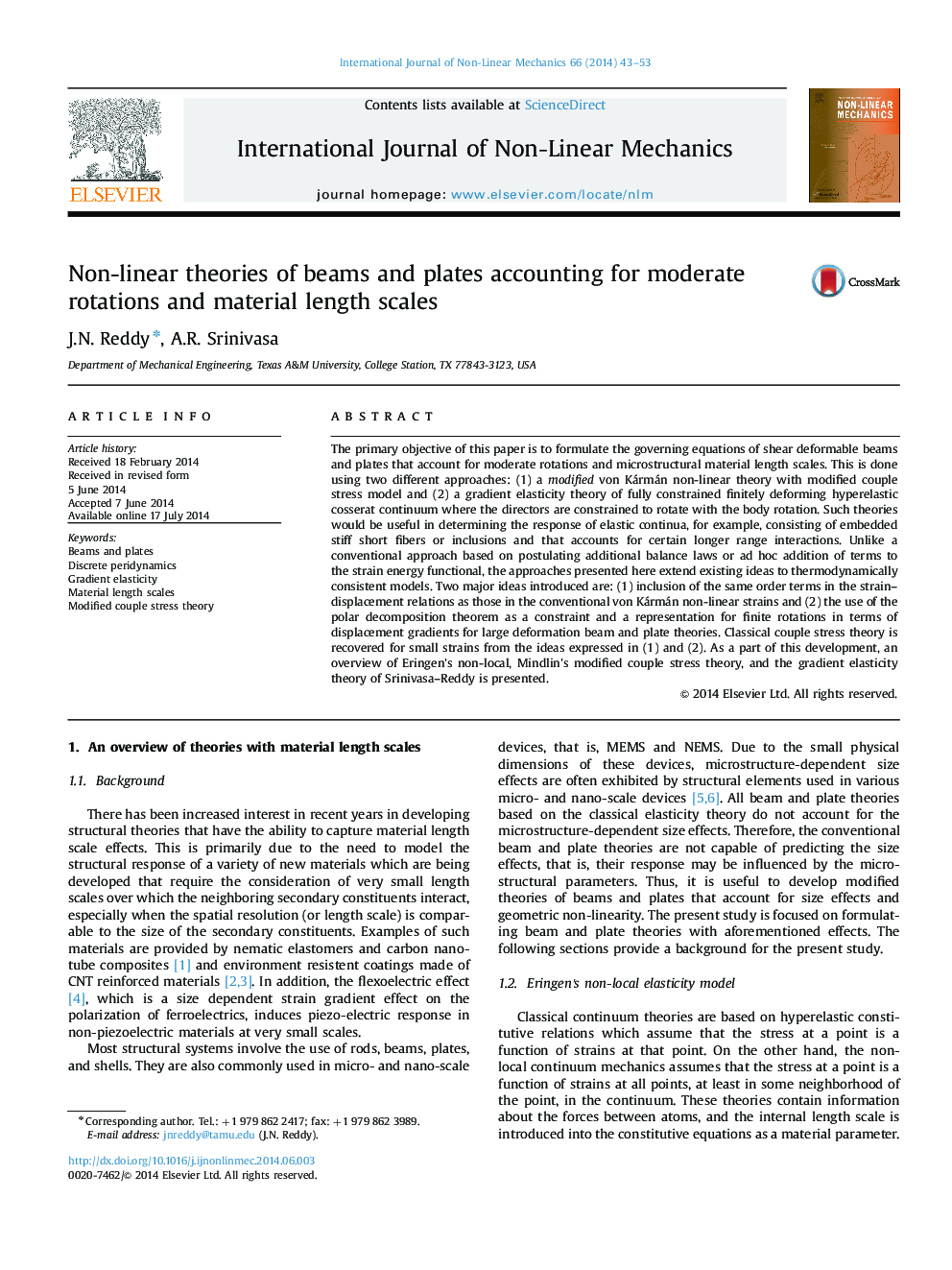| Article ID | Journal | Published Year | Pages | File Type |
|---|---|---|---|---|
| 785593 | International Journal of Non-Linear Mechanics | 2014 | 11 Pages |
•Governing equations accounting for non-linear strains and material length scales are formulated.•The same order terms as those in the von Karman non-linear strains are included in the theory.•Review of Eringen׳s non-local and the gradient elasticity theory of Srinivasa–Reddy is presented.•An equivalence between the modified couple stress and strain-gradient theories is established.
The primary objective of this paper is to formulate the governing equations of shear deformable beams and plates that account for moderate rotations and microstructural material length scales. This is done using two different approaches: (1) a modified von Kármán non-linear theory with modified couple stress model and (2) a gradient elasticity theory of fully constrained finitely deforming hyperelastic cosserat continuum where the directors are constrained to rotate with the body rotation. Such theories would be useful in determining the response of elastic continua, for example, consisting of embedded stiff short fibers or inclusions and that accounts for certain longer range interactions. Unlike a conventional approach based on postulating additional balance laws or ad hoc addition of terms to the strain energy functional, the approaches presented here extend existing ideas to thermodynamically consistent models. Two major ideas introduced are: (1) inclusion of the same order terms in the strain–displacement relations as those in the conventional von Kármán non-linear strains and (2) the use of the polar decomposition theorem as a constraint and a representation for finite rotations in terms of displacement gradients for large deformation beam and plate theories. Classical couple stress theory is recovered for small strains from the ideas expressed in (1) and (2). As a part of this development, an overview of Eringen׳s non-local, Mindlin׳s modified couple stress theory, and the gradient elasticity theory of Srinivasa–Reddy is presented.
